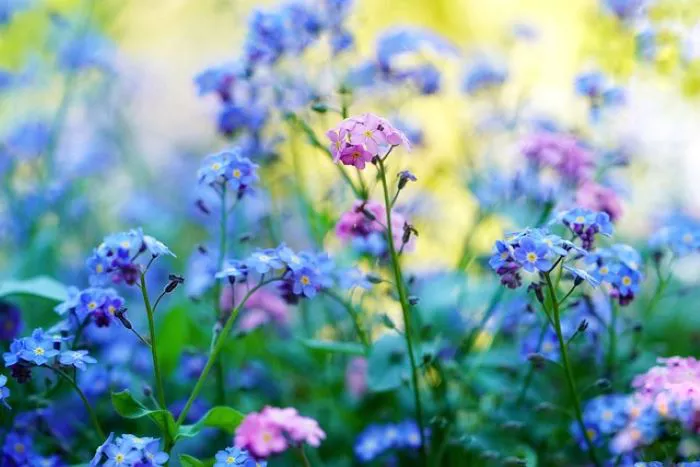Wildflowers are not only beautiful additions to gardens and landscapes but also offer a variety of edible options. Many wildflowers have been used for centuries in culinary practices. They can enhance dishes with flavor, color, and nutrition. This article will explore some common edible wildflowers, their uses, and important considerations for safe consumption.
Understanding Edible Wildflowers
Edible wildflowers can be found in various habitats, including meadows, forests, and gardens. They can be used in salads, teas, desserts, and as garnishes. While many wildflowers are safe to eat, some can be toxic. It is essential to accurately identify any wildflower before consuming it. Always consult a reliable guide or expert when foraging for wild edibles.
Common Edible Wildflowers
Several wildflowers are known for their culinary uses. Here are some popular examples:
Dandelion (Taraxacum officinale)
Dandelions are well-known for their bright yellow flowers. Every part of the dandelion is edible. The young leaves can be added to salads, while the flowers can be used to make wine or infused in oil. Dandelion roots can be roasted and brewed as a coffee substitute.
Nasturtium (Tropaeolum majus)
Nasturtiums are vibrant flowers that come in various colors, including orange, red, and yellow. Both the leaves and flowers are edible and have a peppery flavor similar to arugula. They can be used in salads, sandwiches, or as a colorful garnish.
Calendula (Calendula officinalis)
Calendula, also known as marigold, has bright orange and yellow flowers. The petals are edible and can add a splash of color to salads and soups. Calendula is also used in herbal teas and skin care products due to its anti-inflammatory properties.
Clover (Trifolium spp.)
Clover flowers, particularly red and white clover, are edible. The flowers can be used in salads or brewed into tea. Clover has a sweet flavor and is rich in nutrients. Young clover leaves are also edible and can be added to salads or cooked like spinach.
Violet (Viola spp.)
Violets are known for their delicate, heart-shaped leaves and purple flowers. Both the flowers and leaves are edible. Violets can be used in salads or candied for decoration. They have a mild, sweet flavor and are also rich in vitamins A and C.
Bee Balm (Monarda spp.)
Bee balm, also known as wild bergamot, has striking red or purple flowers that attract pollinators. The flowers are edible and can be used to make herbal tea or as a garnish. Bee balm has a minty flavor and is known for its aromatic properties.
Borage (Borago officinalis)
Borage has star-shaped blue flowers and is often used in culinary applications. The flowers have a cucumber-like flavor and can be added to salads or used as a garnish in drinks. Borage leaves are also edible but should be consumed in moderation due to their high content of pyrrolizidine alkaloids.
Culinary Uses of Edible Wildflowers
Edible wildflowers can be incorporated into various dishes. Here are some ideas for using them in your cooking:
Salads: Add a mix of edible flowers to salads for a burst of color and flavor. Flowers like nasturtium, violet, and dandelion leaves complement greens beautifully.
Teas: Many wildflowers can be dried and used to make herbal teas. Chamomile, bee balm, and calendula are popular choices for soothing beverages.
Desserts: Edible flowers can be used to decorate cakes, cupcakes, and other desserts. Candied violets and borage flowers make stunning garnishes.
Infused Oils and Vinegars: Flowers like calendula and nasturtium can be infused into oils or vinegars to create flavorful dressings or marinades.
Important Considerations
While many wildflowers are safe to eat, there are essential precautions to take:
Proper Identification: Always ensure you can accurately identify any wildflower before consuming it. Some flowers may have toxic look-alikes.
Harvesting: When foraging, harvest flowers from areas that have not been treated with pesticides or herbicides. Avoid picking flowers near roadsides or polluted areas.
Moderation: Even edible flowers can cause allergic reactions or digestive issues in some individuals. Start with small amounts to gauge your body’s response.
Consult Experts: If you are unsure about any wildflower, consult a local expert or a reliable field guide. Joining foraging groups or workshops can provide valuable knowledge.
Conclusion
Edible wildflowers offer a unique way to enhance your culinary creations while connecting with nature. From dandelions to violets, many wildflowers are not only safe to eat but also add flavor and beauty to dishes. Always prioritize safety by properly identifying flowers and harvesting them responsibly. With careful consideration, you can enjoy the delightful flavors and vibrant colors that edible wildflowers bring to your table.


